Is Your Lawn Drowning? 5 Signs You’re Overwatering (And How to Fix It)
I get calls like this all the time. A homeowner is at their wit’s end because their lawn is turning a sickly yellow. They’ve been pouring more and more water on it, thinking it must be thirsty, but it only gets worse. The moment I step out of my truck, I can usually see the problem. The grass looks weak and limp, and the ground has this weird sheen even on a sunny day. When I walk on it, my boots make a squishy, pathetic sound. This lawn isn’t thirsty; it’s drowning.
In this article
After years of working with turf, I can tell you this is hands-down one of the most common—and most damaging—mistakes people make. With the best of intentions, they literally love their lawns to death. They see a yellow spot and immediately grab the hose, but nine times out of ten, the real issue is too much water, not too little.
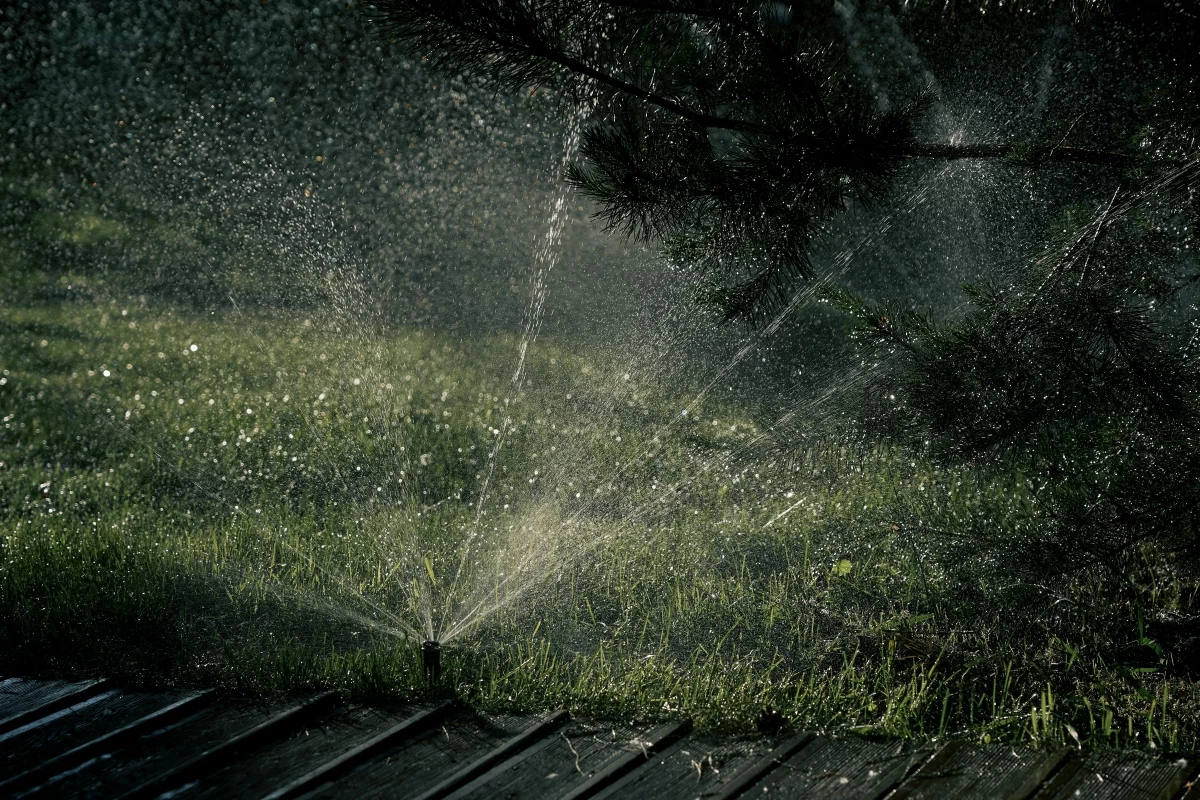
Honestly, overwatering is a triple threat: it wastes water, jacks up your utility bill, and creates a weak, disease-prone lawn. My goal here is to show you how to read the signals your lawn is sending. Let’s dig in—literally—and figure out what’s going on under your feet so you can build a tough, resilient lawn that actually thrives.
What’s Happening in the Soil (It’s Not Just Dirt)
To get why overwatering is so bad, you have to picture what healthy soil is like. It’s not just compact dirt; it’s a living ecosystem full of minerals, organic matter, and tiny little pockets of space. Think of it like a sponge. Those little pockets are crucial because they’re supposed to hold a healthy mix of both water and air.
And here’s the kicker: grass roots need both. They obviously drink water, but they also have to breathe to survive. When you water correctly, water clings to the soil particles, leaving plenty of those pockets full of oxygen for the roots. It’s a perfect balance.
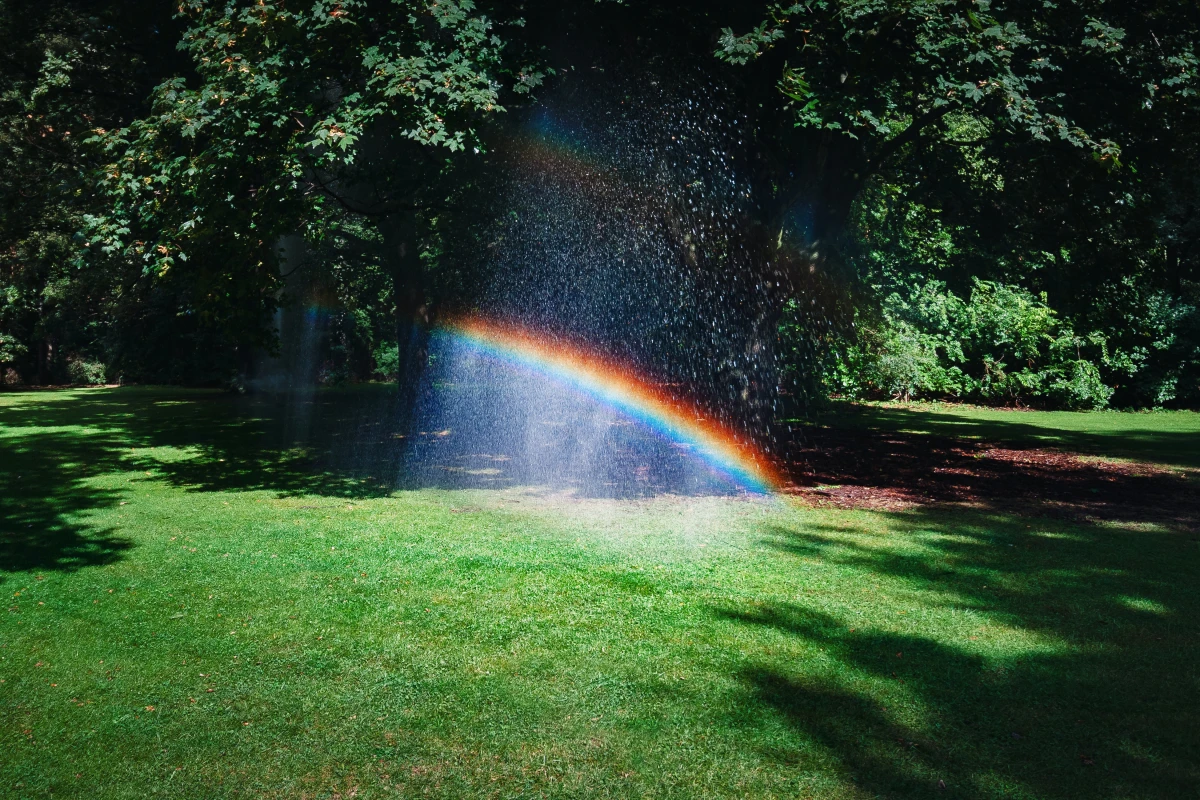
But when you overwater, you fill every single one of those air pockets with water. The soil becomes completely saturated, and all the oxygen gets pushed out. The roots can no longer breathe. They are, quite literally, suffocating. They can’t absorb nutrients, they stop growing, and they eventually start to rot. If you were to dig up a small patch, you might even get a whiff of a sour, swampy smell. That’s the smell of decay, my friend.
This is precisely why an overwatered lawn turns yellow. It’s not thirsty—it’s suffocating and starving.
Good to know: Don’t know what kind of soil you have? Try the ‘Soil Jar Test.’ Grab a clear jar with a lid, fill it about one-third full with soil from your yard, and top it off with water, leaving some air at the top. Shake it like crazy for a minute, then let it sit for a day. The soil will settle into layers. The heavy sand will be at the bottom, silt will be in the middle, and the finest clay particles will be on top. This gives you a great idea of whether your soil is mostly sand (drains fast) or clay (drains slow).
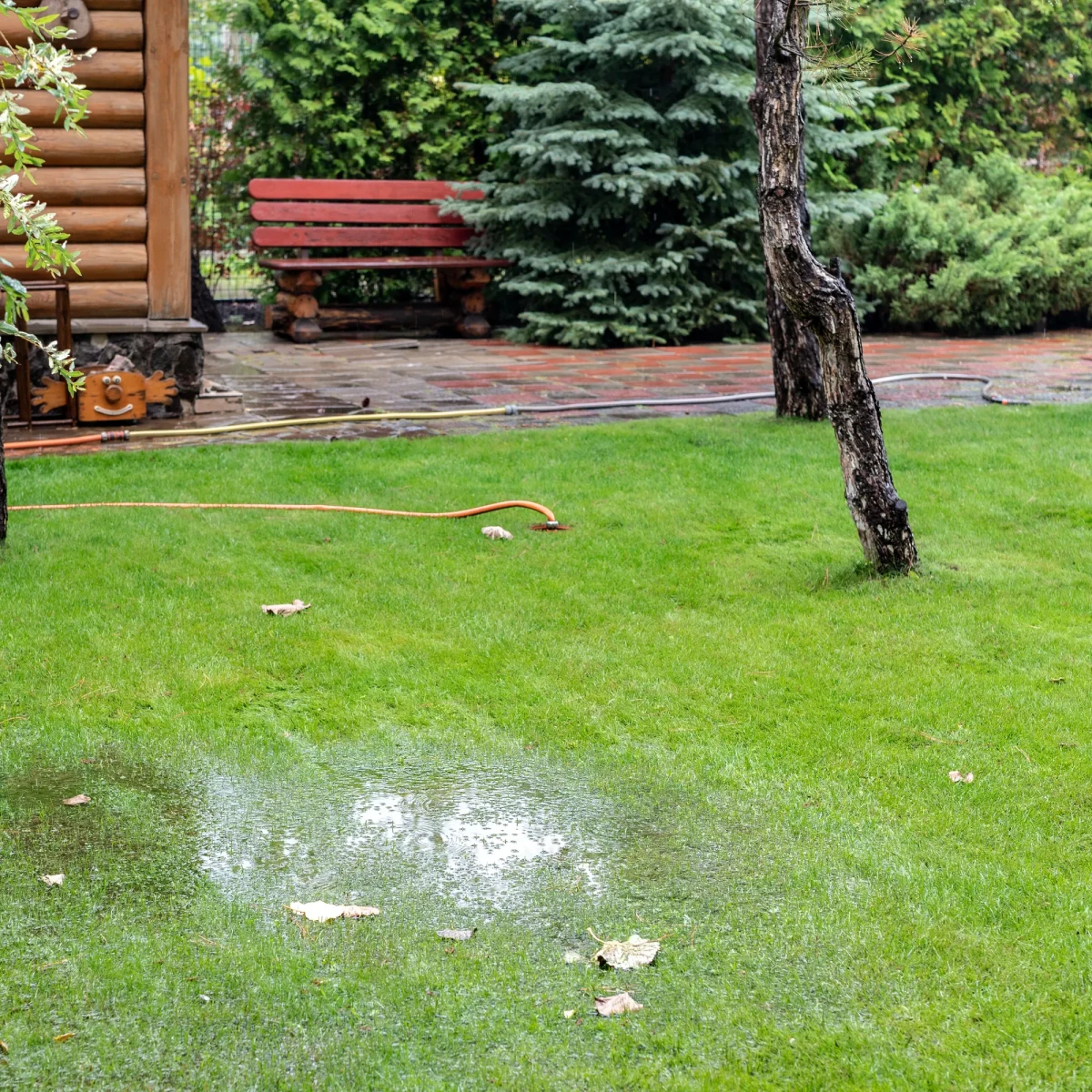
The 5 Telltale Signs of an Overwatered Lawn
Your lawn practically screams when it’s in trouble. You just need to know what to listen for. Here are the top five things I look for on any property.
1. It Feels Spongy or Squishy Underfoot
This is the easiest physical test. Go for a walk on your lawn a few hours after watering, or even the next day. A healthy, properly watered lawn should feel firm. If it feels soft and spongy, the soil is waterlogged. You might even notice your footprints sticking around because the grass blades are too weak and water-filled to spring back up.
A quick pro tip I use is the “Screwdriver Test.” Just take a regular long-bladed screwdriver and try pushing it into the soil. If it’s hard as a rock, the lawn is too dry. If it slides in six to eight inches with almost no resistance and feels muddy, it’s definitely overwatered.
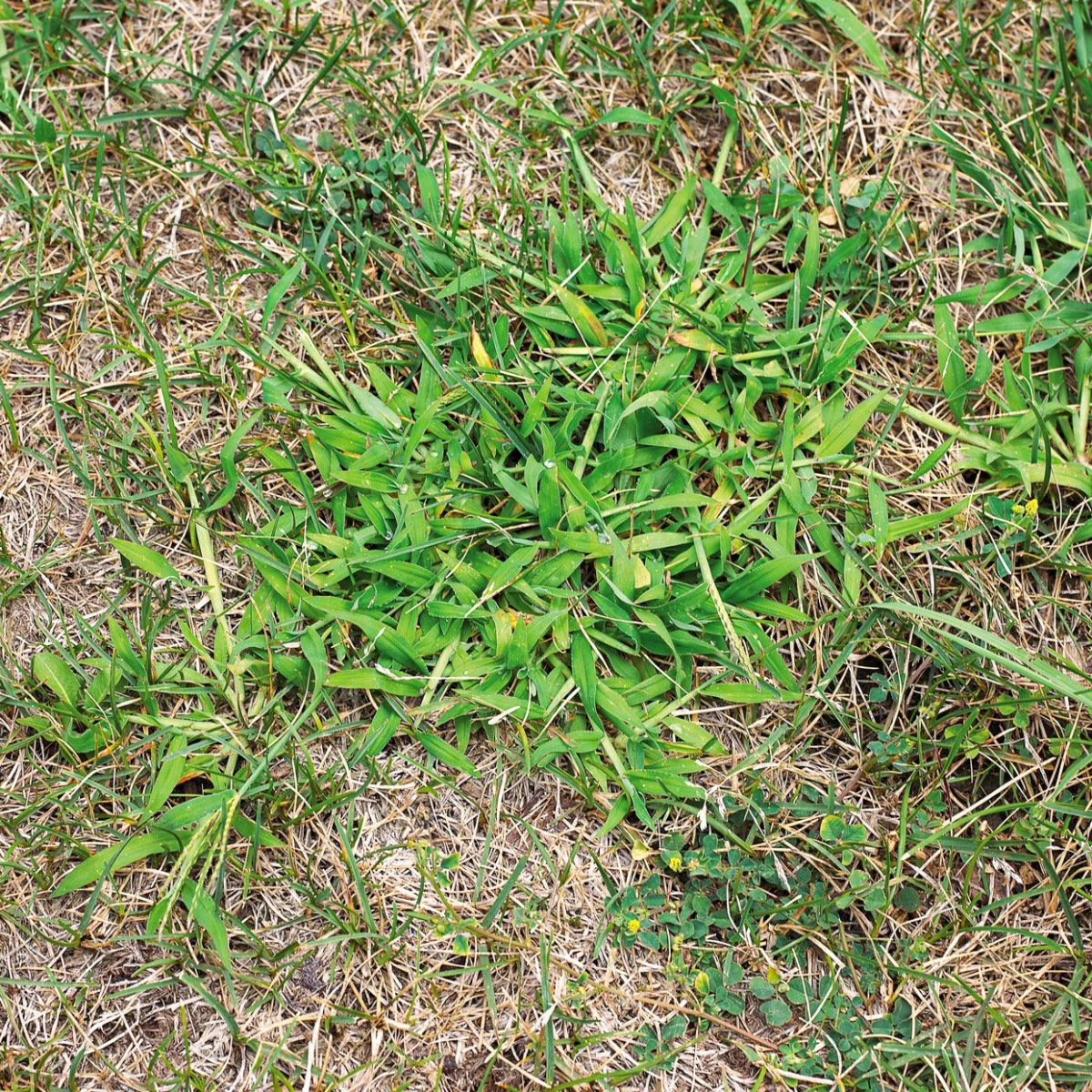
2. A Sudden Invasion of Weeds
A thick, thriving lawn is its own best defense against weeds. But an overwatered lawn is a weak lawn. The grass thins out, creating the perfect opening for opportunistic weeds to take over.
Some weeds are a dead giveaway. If you suddenly see a ton of nutsedge (it has a distinctive triangular stem) or crabgrass, that’s a classic sign your soil is too wet. Instead of just spraying weed killer, you have to fix the underlying water issue, or they’ll just keep coming back.
3. Fungus, Mushrooms, and Disease Appear
Fungi absolutely love damp, warm conditions. So if mushrooms are popping up everywhere, consider them a big, flashing sign that your soil is staying wet for far too long. While most mushrooms themselves won’t harm the grass, they indicate a bigger problem.
Even more concerning are lawn diseases. Watering at night is a major trigger because it lets moisture sit on the grass blades for hours. This invites ugly stuff like Brown Patch, which leaves circular brown-yellow patches, or Dollar Spot, which looks like little bleached spots. Before you run out and spend money on fungicide (which can be pricey), you MUST fix the watering problem. Otherwise, you’re just throwing money away.
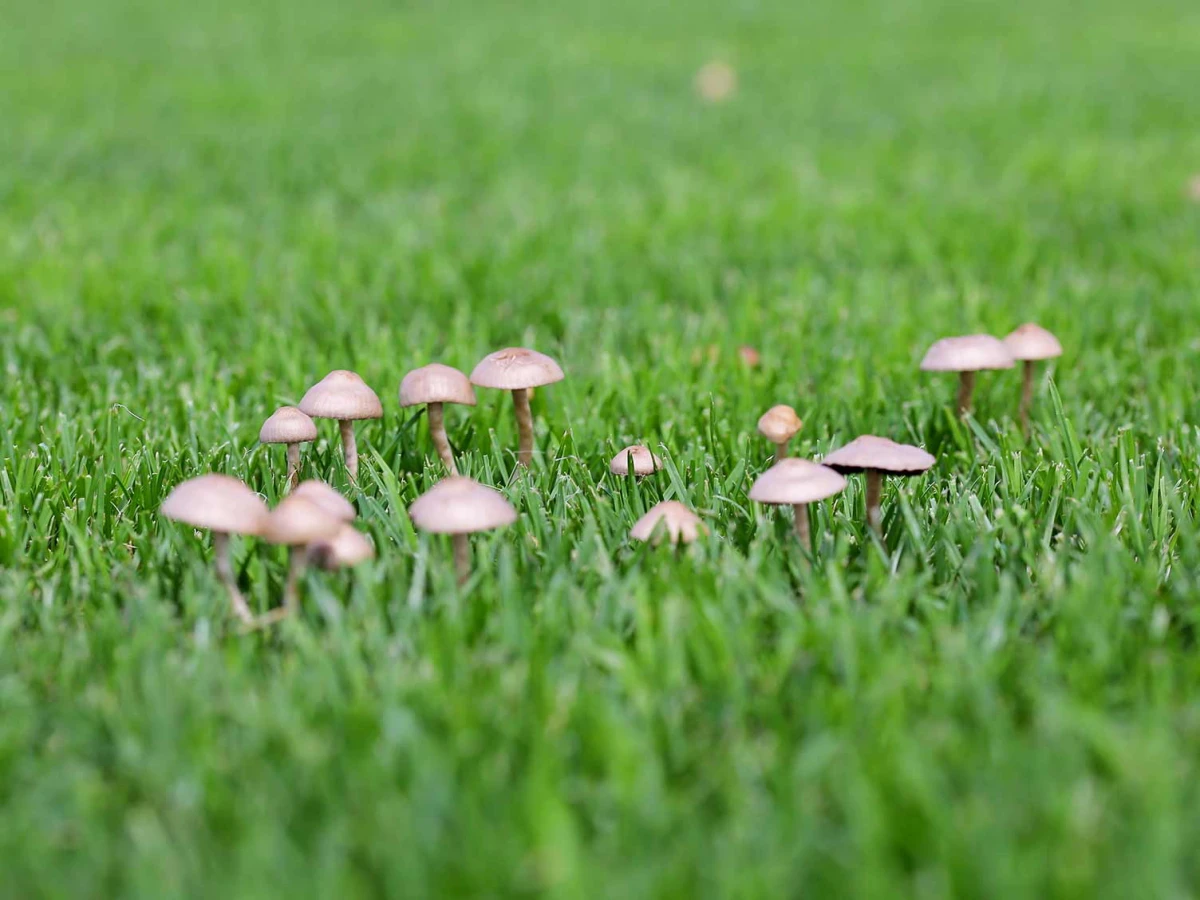
4. The Grass Turns Yellow or Light Green
As we covered, yellowing (the pros call it chlorosis) is a classic sign of root suffocation. But how do you tell it apart from a thirsty lawn? It’s a key distinction.
- An overwatered lawn is often a sickly, uniform yellow or light green. The grass blades feel limp and weak. The ground is soft and spongy.
- An underwatered (thirsty) lawn will usually turn a dull, bluish-gray color first. The grass blades will fold or curl up to conserve water, and the ground will be hard.
So if it’s yellow and squishy, back off the water. If it’s blue-gray and hard, it’s time to drink.
Oh, and sometimes the problem isn’t water at all! Give a patch of the sick-looking turf a firm tug. If it peels back like a cheap rug with no roots, you’ve got grubs. If it holds tight, it’s almost certainly a water or disease issue.
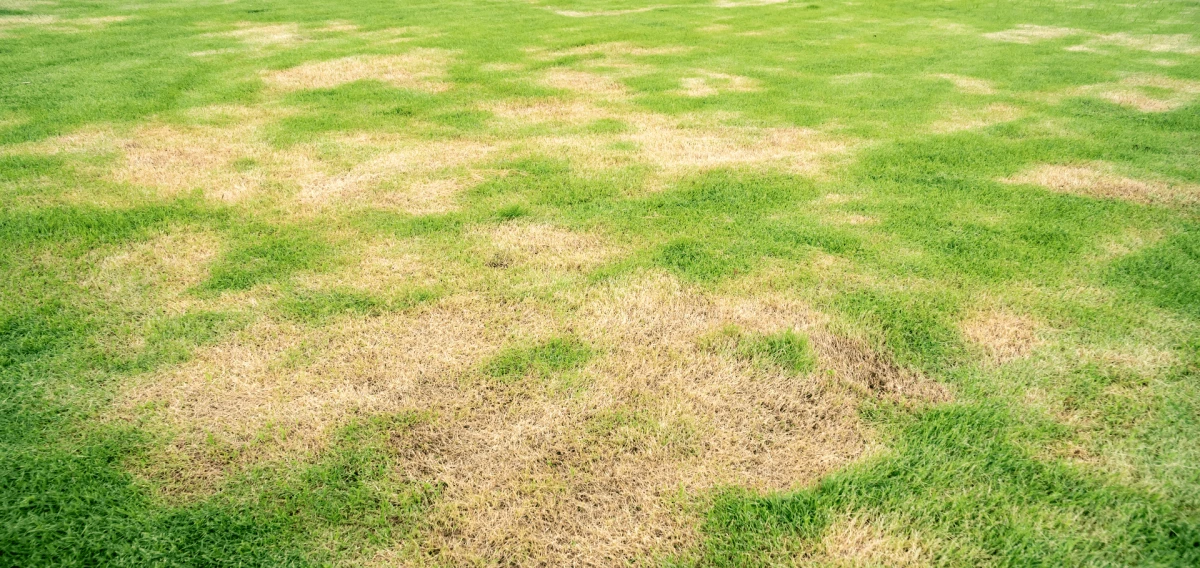
5. Water is Running Off into the Street
Next time you water, watch where the water goes. Is it soaking in, or is it running off your lawn and down the driveway? Runoff means one of two things: either the soil is already saturated, or you’re applying water faster than your soil can absorb it (super common with clay soil).
This isn’t just wasteful; it’s bad for your wallet and the environment. You’re washing away money in the form of water, fertilizer, and any other treatments you’ve applied. Paying attention to runoff is a win-win-win.
The Pro’s Recovery Plan: How to Fix It and Keep It Fixed
Okay, so you’ve diagnosed the problem. Now what? Fixing an overwatered lawn is a two-step process: immediate triage and long-term prevention.
Step 1: Stop Watering and Aerate
First things first: turn off the sprinklers. Just stop. Let the soil dry out. This could take a few days or even a week, depending on the weather. Let the lawn tell you when it’s thirsty again.
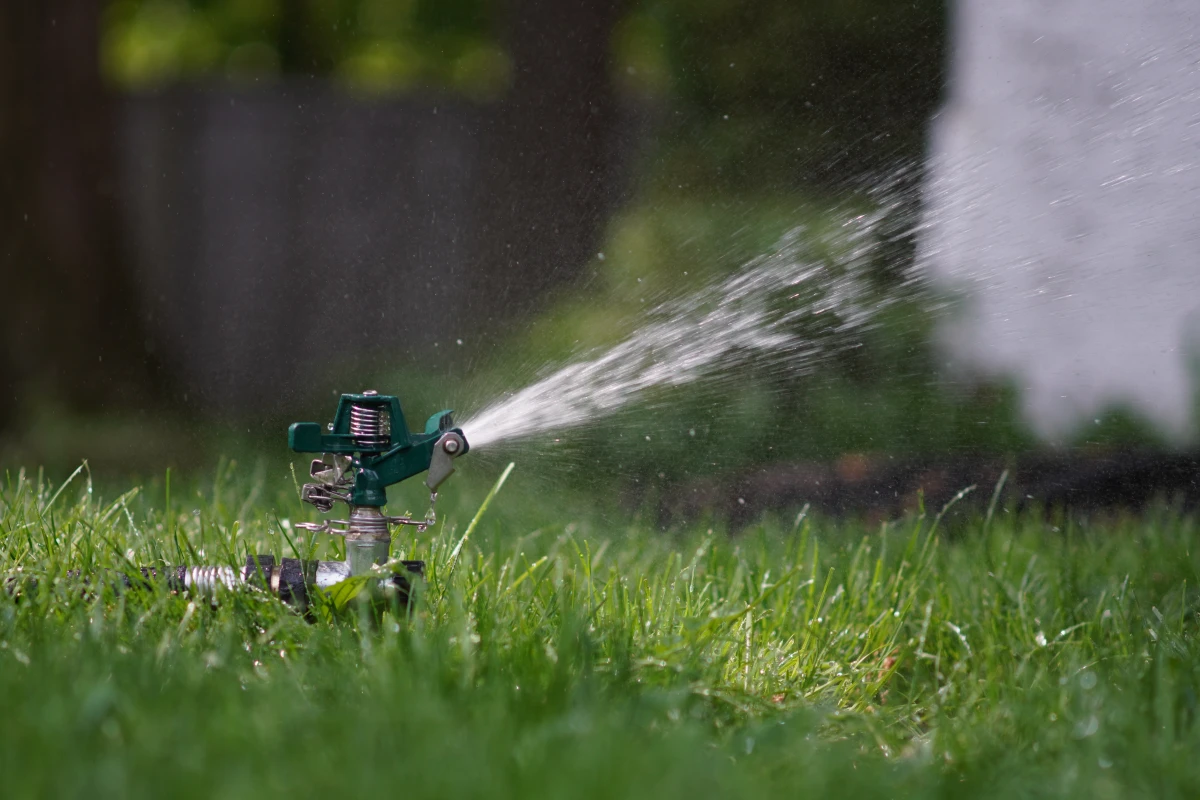
Once the ground has firmed up, the single best thing you can do is core aeration. This is where a machine pulls up small plugs of soil, breaking up compaction and allowing precious air back into the root zone. This is NOT the same as just poking holes with a spike, which can actually make compaction worse.
Heads up! You can rent a core aerator from a place like Home Depot for about $70-$100 for a half-day. But these machines are heavy and can be a real beast to handle. A professional lawn service will typically charge between $150 and $250, depending on your lawn size. For many, hiring a pro is worth it to avoid the hassle and potential damage to sprinkler heads or underground lines. (ALWAYS call 811 to have utilities marked before you dig or aerate!)
A common pitfall: Weeds love to sprout in fresh aeration holes. Don’t panic! This is the absolute best time to spread grass seed. The holes provide the perfect protected pocket for seeds to germinate and thicken up your lawn.
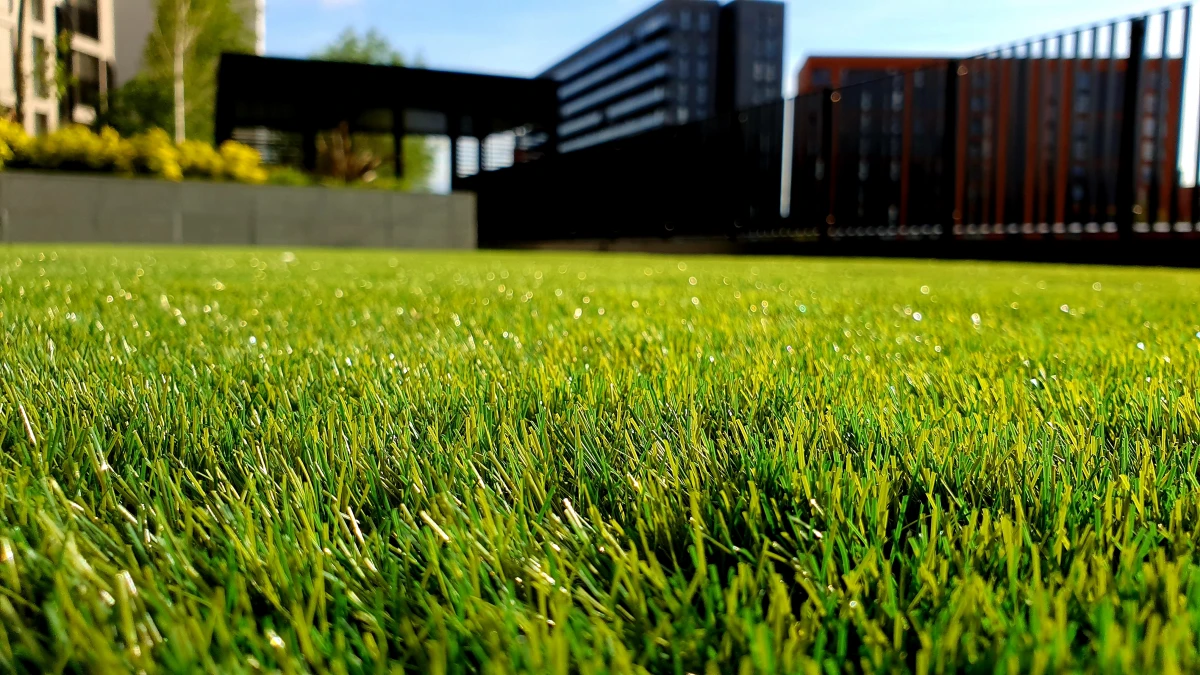
Step 2: Figure Out Your Sprinklers (The Tuna Can Test)
You can’t manage what you don’t measure. Most people have no clue how much water their sprinklers actually put out. Let’s fix that. Grab 5-10 empty tuna or cat food cans.
- Scatter the empty cans randomly across one sprinkler zone.
- Run that zone for a set time, say 15 minutes.
- Turn it off and use a ruler to measure the water in each can.
- Add up the depths and divide by the number of cans to get the average.
Let’s say your average depth after 15 minutes was ¼ inch. Just like that, you know it takes your system a full hour (15 mins x 4) to put down 1 inch of water. Now you can program your timer based on facts, not feelings. This works for any sprinkler, even the cheap $20 one you move around with a hose.
Step 3: Build a Smarter Watering Schedule
Now that you have real data, you can water smarter. The goal is always to water deeply and infrequently.
- How Much: Most lawns need about 1 to 1.5 inches of water per week during the growing season, and that includes any rain! A simple rain gauge is a great, cheap investment.
- How Often: Deliver that inch of water in one or two sessions per week, not a little bit every day. This forces the roots to grow deeper to find moisture, making the whole plant tougher.
- When: The best time to water is always early morning, between 4 a.m. and 9 a.m. This minimizes evaporation and lets the grass blades dry during the day, preventing fungus.
Quick Win: Want to get a feel for this? Turn your automatic controller OFF for one week. Only water manually when the Screwdriver Test tells you it’s needed. This will completely change your relationship with your lawn.
Step 4: Improve Your Soil for the Long Haul
Aeration is a great start, but for long-term health, you can’t beat compost. After you aerate, spread a thin layer (about ¼ inch) of high-quality compost over the lawn. A bag usually runs between $5 and $10. The compost works its way into the aeration holes, improving soil structure, drainage, and adding amazing organic matter over time. It’s not a quick fix, but it’s a permanent one.
Your lawn is a living system. Learning to observe it is the best skill you can have. Ditch the rigid automatic schedule, get your hands dirty, and give your lawn what it’s actually asking for. You’ll end up with a stronger, healthier, and more beautiful lawn that can handle whatever the season throws at it.
Inspirational Gallery
Is it better to water a little bit every day?
Absolutely not. This is one of the most common mistakes that leads to a weak lawn. Light, daily watering encourages grass roots to stay near the surface, creating a shallow, needy root system that panics at the first sign of heat. The goal is deep, infrequent watering. This trains roots to grow downward in search of moisture, building a tougher, more drought-resistant lawn that can truly thrive.
According to the U.S. Environmental Protection Agency, as much as 50% of the water used for outdoor irrigation is wasted due to overwatering and inefficient systems.
That means for every 30 minutes your sprinklers run, 15 minutes of that water—and money—could be going right down the drain. Investing in a smart controller or simply learning your lawn’s real needs can have a huge impact on both your water bill and local conservation efforts.
A constantly wet lawn is an open invitation for fungal diseases that love damp conditions. If you see these signs, your watering habits are the likely culprit:
- Brown Patch: Expanding circular patches of dead grass, often with a dark, smoky ring around the edge on dewy mornings.
- Dollar Spot: Small, straw-colored spots about the size of a silver dollar that can merge into larger, irregular patches.
- Red Thread: You’ll notice distinct pink or reddish thread-like strands growing from the tips of the grass blades.
Weather-Based Controller: A system like the Rachio 3 connects to Wi-Fi and pulls hyper-local weather forecasts. It knows if it’s going to rain and will automatically skip a watering session, saving you water and preventing a swampy yard.
Soil-Based Sensor: An alternative is a system with an on-site sensor, like the Toro Precision Soil Sensor. This device is buried in the root zone and measures moisture directly, telling your controller to water only when the ground is actually dry.
Both technologies take the guesswork out of watering, ensuring your lawn gets exactly what it needs, and no more.
- It feels firm and springy under your feet, not soggy or spongy.
- The blades have a deep, uniform green color, not a sickly yellow tint.
- You can’t easily pull up a clump of grass; the roots are strong.
The secret to this resilient turf? It’s all in the roots. By letting the soil dry out between waterings, you force the roots to grow deep in search of moisture. This creates a dense, robust foundation that naturally resists disease and heat stress.
A simple, effective upgrade: One of the easiest ways to prevent accidental overwatering is by adding a rain sensor to your sprinkler system. A small, affordable device like the Hunter Rain-Clik or Orbit’s Wireless Rain Sensor detects recent rainfall and automatically tells your controller to pause its schedule. It’s a set-it-and-forget-it tool that prevents watering a lawn that’s already saturated from a storm.
Know your soil’s personality: Not all soil is created equal, and this directly impacts how you should water. Clay soil holds water for a long time, so it needs slow, deep soaks less frequently to avoid runoff. Sandy soil, on the other hand, drains very quickly and benefits from shorter, more frequent watering cycles. Adjusting your watering strategy to your soil type is a pro move for a healthier lawn.
If you’re tired of the constant battle, consider switching to a more drought-tolerant grass variety. These grasses are naturally adapted to use less water, making them a smart, sustainable choice. Top performers include:
- Tall Fescue (for cooler climates)
- Zoysia Grass
- Bermuda Grass
- St. Augustine Grass (in warmer regions)
Overwatering doesn’t just drown roots; it also flushes essential nutrients like nitrogen right past the root zone before the grass can absorb them. You end up with a weak, yellow lawn that you then try to fix with more fertilizer, which also gets washed away. It’s a costly, ineffective cycle that can be broken by simply watering correctly.










